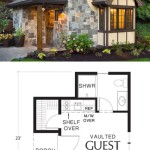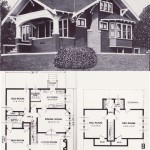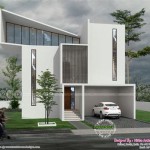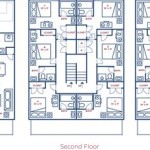Modern house plans embody the essence of contemporary architecture, emphasizing clean lines, open spaces, and a seamless integration with the natural surroundings. These plans prioritize functionality and energy efficiency, resulting in homes that are both aesthetically pleasing and environmentally friendly. One notable example is the Farnsworth House, designed by Ludwig Mies van der Rohe in 1946, which epitomizes the principles of modernism with its glass exterior and open floor plan.
Beyond the aesthetic appeal, modern house plans offer several advantages. They often incorporate sustainable materials and technologies, reducing the environmental footprint of the home. The emphasis on natural light and ventilation promotes healthy living environments. Additionally, the open and flexible layouts provide ample space for customization and meet the evolving needs of modern families.
In the following sections, we will delve deeper into the key features and benefits of modern house plans, explore the latest trends and innovations in this field, and provide guidance for selecting the perfect plan for your dream home.
Modern house plans are characterized by several key features that set them apart from traditional designs. Here are nine important points to consider:
- Open floor plans
- Abundant natural light
- Sustainable materials
- Energy efficiency
- Clean lines
- Minimalist aesthetic
- Smart home integration
- Indoor-outdoor connection
- Customizable layouts
These elements combine to create homes that are both stylish and functional, meeting the needs of modern living.
Open floor plans
Open floor plans are a hallmark of modern house plans, characterized by the absence of walls or partitions separating the living room, dining room, and kitchen areas. This design concept creates a spacious and airy atmosphere, allowing for natural light to flow freely throughout the space. Open floor plans promote a sense of connectivity and togetherness, making them ideal for families and individuals who enjoy entertaining.
One of the key benefits of open floor plans is their flexibility. The lack of walls allows for easy reconfiguration of the space to accommodate changing needs and preferences. For example, a homeowner can easily create a dedicated play area for children or a cozy reading nook without the need for major renovations.
Open floor plans also offer practical advantages. By eliminating walls, builders can reduce construction costs while maximizing the use of available space. This can result in more affordable homes without sacrificing comfort or style.
However, it is important to note that open floor plans may not be suitable for everyone. Individuals who value privacy or prefer more defined spaces may find them less appealing. Additionally, open floor plans require careful planning to ensure proper acoustics and separation of different functional areas.
Overall, open floor plans offer a range of benefits for modern homeowners, including spaciousness, flexibility, and cost-effectiveness. By carefully considering the advantages and disadvantages, individuals can determine if an open floor plan is the right choice for their dream home.
Abundant natural light
Modern house plans prioritize abundant natural light, creating bright and airy living spaces that promote well-being and reduce energy consumption. Large windows, skylights, and glass doors are strategically placed to maximize the influx of daylight throughout the day. This not only enhances the aesthetic appeal of the home but also offers several practical benefits.
Natural light has a positive impact on our physical and mental health. Studies have shown that exposure to sunlight can boost mood, improve sleep quality, and increase productivity. It also helps regulate our circadian rhythm, which is essential for overall health and well-being. By incorporating ample natural light into the design, modern house plans create healthier and more comfortable living environments.
In addition to its health benefits, natural light can also reduce energy consumption. By relying less on artificial lighting, homeowners can save on their energy bills while also reducing their environmental footprint. Modern house plans often incorporate passive solar design principles, which utilize the sun’s energy to heat the home during the winter months and cool it during the summer months. This further enhances the energy efficiency of the home.
Furthermore, natural light can improve the overall aesthetic of the home. Large windows and glass doors offer stunning views of the surrounding landscape, blurring the boundaries between indoor and outdoor spaces. This creates a sense of spaciousness and tranquility, making the home a more enjoyable place to live and relax.
Overall, abundant natural light is an essential element of modern house plans, contributing to the health, comfort, energy efficiency, and aesthetic appeal of the home.
Sustainable materials
Modern house plans embrace sustainability by incorporating eco-friendly materials that minimize environmental impact and promote healthy living. These materials are carefully selected for their durability, energy efficiency, and low embodied carbon, contributing to the creation of homes that are both beautiful and responsible.
One of the key sustainable materials used in modern house plans is bamboo. Bamboo is a rapidly renewable resource that requires minimal water and pesticides to grow. It is also incredibly strong and durable, making it an ideal choice for flooring, cabinetry, and structural components. Additionally, bamboo absorbs carbon dioxide during its growth, helping to reduce greenhouse gas emissions.
Another sustainable material gaining popularity in modern house plans is cork. Cork is harvested from the bark of cork oak trees without harming the trees themselves. It is a natural insulator, providing excellent thermal and acoustic performance. Cork is also fire-resistant, hypoallergenic, and resistant to mold and mildew, making it a durable and healthy choice for flooring, walls, and countertops.
Recycled materials are also playing a significant role in modern house plans. By using recycled steel, aluminum, and glass, builders can reduce the demand for virgin materials and conserve natural resources. Recycled materials often have a lower carbon footprint than their virgin counterparts, further contributing to the sustainability of the home.
In addition to these specific materials, modern house plans often prioritize sustainable practices throughout the construction process. This includes using low-VOC (volatile organic compound) paints and finishes, installing energy-efficient appliances, and implementing water-saving fixtures. By adopting a holistic approach to sustainability, modern house plans create homes that are not only environmentally friendly but also contribute to the well-being of the occupants.
Energy efficiency
Modern house plans prioritize energy efficiency, incorporating design strategies and technologies that minimize energy consumption and reduce operating costs. This not only benefits the environment but also saves homeowners money on their utility bills.
One key aspect of energy efficiency in modern house plans is the use of passive solar design principles. This involves orienting the home to take advantage of the sun’s natural heating and cooling effects. For example, south-facing windows allow sunlight to penetrate the home during the winter months, providing natural heat. Overhangs and awnings can be used to shade windows during the summer months, reducing heat gain.
Modern house plans also incorporate high-performance insulation materials in the walls, roof, and foundation. This helps to minimize heat loss during the winter and heat gain during the summer, reducing the need for artificial heating and cooling. Energy-efficient windows and doors are another important element, as they prevent heat transfer and air leakage.
In addition to passive design strategies, modern house plans often include active energy-saving technologies. These may include solar panels, which convert sunlight into electricity; geothermal heat pumps, which use the earth’s natural heat to heat and cool the home; and energy-efficient appliances, which consume less energy to operate.
By incorporating energy-efficient features into the design, modern house plans create homes that are not only comfortable and stylish but also environmentally friendly and cost-effective to operate.
Clean lines
Clean lines are a defining characteristic of modern house plans, contributing to their minimalist aesthetic and timeless appeal. This design principle emphasizes simplicity, order, and the absence of unnecessary ornamentation.
- Horizontal lines
Horizontal lines create a sense of stability and calm in modern house plans. They are often used in the form of long, low-profile buildings, horizontal windows, and wide overhangs. By emphasizing the horizontal plane, architects can create homes that appear to hug the ground and blend seamlessly with the surrounding landscape.
- Vertical lines
Vertical lines, on the other hand, add height and drama to modern house plans. They are often used in the form of tall, narrow windows, columns, and chimneys. Vertical lines create a sense of aspiration and grandeur, drawing the eye upwards and making the home appear more spacious.
- Geometric shapes
Geometric shapes, such as squares, rectangles, and circles, are commonly used in modern house plans. These shapes create a sense of order and precision, and they can be combined in various ways to create visually interesting and dynamic compositions.
- Asymmetrical balance
Asymmetrical balance is often used in modern house plans to create a sense of visual interest and movement. This is achieved by arranging elements of the home, such as windows, doors, and balconies, in an uneven or off-center manner. Asymmetrical balance can create a dynamic and visually appealing composition while still maintaining a sense of harmony.
Overall, clean lines are an essential element of modern house plans, contributing to their minimalist aesthetic, timeless appeal, and sense of order and precision.
Minimalist aesthetic
The minimalist aesthetic is a key characteristic of modern house plans, emphasizing simplicity, functionality, and the absence of unnecessary ornamentation. This design philosophy focuses on creating spaces that are both visually pleasing and calming, with a focus on clean lines, neutral colors, and natural materials.
One of the key principles of minimalist design is the concept of “less is more.” By paring down the number of objects and furnishings in a space, architects can create a sense of spaciousness and tranquility. This is often achieved through the use of open floor plans, built-in storage solutions, and multi-functional furniture.
Neutral colors are another important element of the minimalist aesthetic. White, black, and gray are commonly used as a base palette, as they create a sense of calm and serenity. These neutral tones can be complemented with pops of color through artwork, textiles, or accessories, allowing for personalization without overwhelming the space.
Natural materials, such as wood, stone, and glass, are often used in minimalist house plans. These materials bring a sense of warmth and authenticity to the space, and they can help to create a connection to the outdoors. By incorporating natural materials into the design, architects can create homes that are both stylish and sustainable.
Overall, the minimalist aesthetic is about creating spaces that are both visually appealing and calming. By focusing on clean lines, neutral colors, and natural materials, architects can create homes that are both beautiful and functional.
Smart home integration
Smart home integration is becoming increasingly common in modern house plans, allowing homeowners to control and automate various aspects of their home from their smartphone or other devices. This integration offers a range of benefits, including convenience, security, energy efficiency, and entertainment.
One of the key advantages of smart home integration is the convenience it provides. Homeowners can control lighting, adjust the thermostat, lock doors, and monitor security cameras remotely. This can be done through a dedicated app or voice commands, making it easy to manage the home from anywhere at any time.
Smart home integration also enhances security. Motion sensors, door and window sensors, and security cameras can be integrated into a smart home system, allowing homeowners to monitor their property and receive alerts if there is any suspicious activity. This can provide peace of mind and deter potential burglars.
Energy efficiency is another important benefit of smart home integration. Smart thermostats can be programmed to adjust the temperature based on the time of day and occupancy, saving energy and reducing utility bills. Smart lighting systems can be set to turn off automatically when no one is present, further reducing energy consumption.
Finally, smart home integration can enhance entertainment. Smart TVs, sound systems, and streaming devices can be integrated into a smart home system, allowing homeowners to control all their entertainment devices from a single app or remote control. This creates a seamless and enjoyable entertainment experience.
Overall, smart home integration offers a range of benefits that can improve convenience, security, energy efficiency, and entertainment in modern houses. By incorporating smart home features into the design, architects can create homes that are not only stylish and functional but also technologically advanced.
Indoor-outdoor connection
Modern house plans emphasize the connection between indoor and outdoor spaces, creating homes that seamlessly blend with their natural surroundings. This connection is achieved through the use of large windows, sliding glass doors, and outdoor living areas, allowing for a harmonious flow between the two.
One of the key benefits of an indoor-outdoor connection is the increased natural light that floods into the home. Large windows and sliding glass doors allow sunlight to penetrate deep into the interior, creating bright and airy living spaces. This natural light not only enhances the aesthetic appeal of the home but also has positive effects on health and well-being.
Another advantage of an indoor-outdoor connection is the ability to extend living spaces beyond the traditional confines of the home. Outdoor living areas, such as patios, decks, and balconies, provide additional space for relaxation, dining, and entertaining. By seamlessly connecting these outdoor spaces to the interior, modern house plans create a sense of spaciousness and fluidity.
Furthermore, an indoor-outdoor connection can enhance the overall aesthetic of the home. By blurring the boundaries between the interior and exterior, architects can create a cohesive design that integrates the home with its surrounding landscape. This connection allows homeowners to enjoy the beauty of the outdoors from the comfort of their own home, creating a truly immersive living experience.
Overall, the indoor-outdoor connection is an essential element of modern house plans, contributing to the health, well-being, and aesthetic appeal of the home. By seamlessly blending indoor and outdoor spaces, architects create homes that are not only beautiful but also connected to the natural world.
Customizable layouts
Customizable layouts are a hallmark of modern house plans, offering homeowners the flexibility to create a home that perfectly suits their unique needs and preferences. This flexibility is achieved through the use of modular design principles and open floor plans, which allow for easy reconfiguration of spaces to accommodate changing needs over time.
One of the key advantages of customizable layouts is the ability to adapt the home to different family compositions and lifestyles. For example, a young couple may initially design their home with an open floor plan and minimal bedrooms. As their family grows, they can easily add additional bedrooms or convert existing spaces into playrooms or home offices. This flexibility ensures that the home can evolve alongside the family’s needs without the need for major renovations.
Customizable layouts also allow homeowners to express their personal style and create a home that truly reflects their taste. By choosing from a range of finishes, fixtures, and appliances, homeowners can create a space that is both unique and functional. This level of personalization ensures that each modern house is a true reflection of the people who live in it.
Furthermore, customizable layouts can enhance the overall value of the home. By creating a home that is tailored to the specific needs of the occupants, homeowners can increase its appeal to potential buyers in the future. This flexibility makes modern house plans a wise investment for those who value both comfort and resale value.
Overall, customizable layouts are an essential element of modern house plans, empowering homeowners to create homes that are not only beautiful but also perfectly suited to their individual needs and preferences. By embracing flexibility and personalization, modern house plans offer a truly unique and tailored living experience.









Related Posts








